Opinion: Can blockchain really save the debt economy?
Author: IPFS Force area Taosheng Shi
Source: IPFS Force Zone
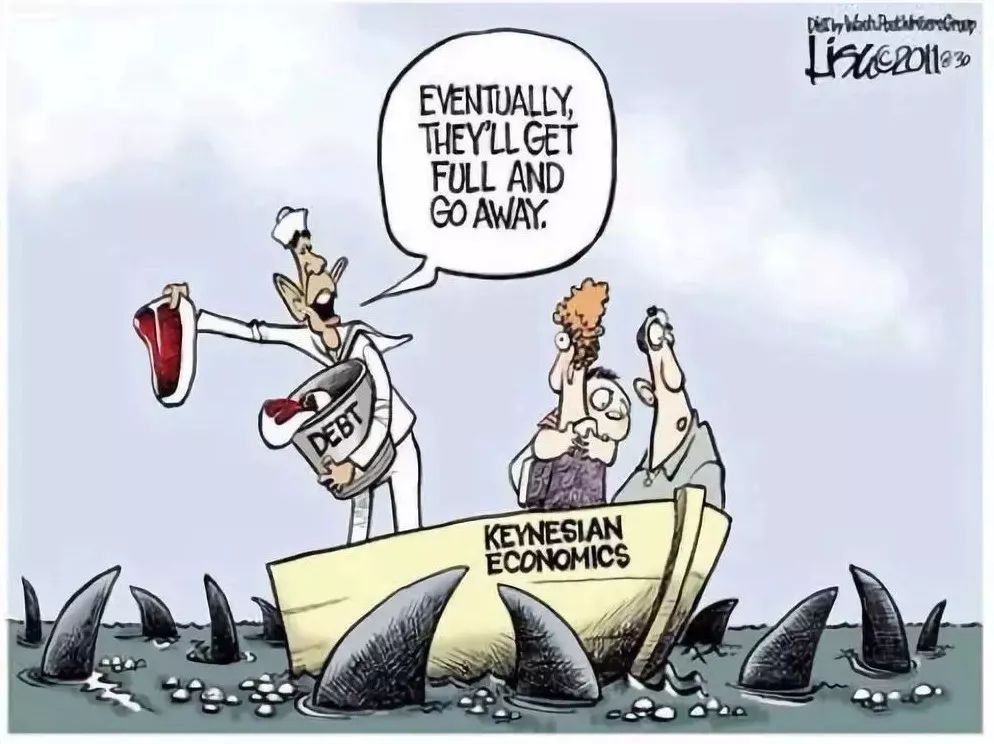
The book "Capital of the 21st Century" discusses a core issue: the profit of the profiteer is greater than that of the laborer . It is a basic feature of financial capitalism that one class leases excess capital to another class in order to obtain a return on investment.
Going back to the origin of money, interest and debt have been locked in Biblical quotes and Aristotle's exhortations. The Bible's Psalms states: "The people of God must not lend money for profit or exploit innocent people. If they do this, they will be abandoned by God." Aristotle's naturalist view is that money is infertile, and therefore using money to make money is anti-natural and should be discarded.
- High-quality asset shortage, four-step analysis of whether digital assets are independent of traditional market conditions
- Read the next wave of DeFi in one article: Security and Privacy
- Coinbase five-year veteran: how the excellent blockchain product "Koi" was made
Jews who also believe in the Old Testament have escaped moral torture because of a statement in Deuteronomy: "Never loan usury to brothers and sisters, whether money, food, or anything Take … If it is for a living, this is desirable; if it is for brothers and sisters, it is absolutely not necessary. "This creed, which is called" the double standard of Deuteronomy "in later generations, has become a" foreign man "to Jews throughout Europe. The main source of lending, but it has also formed a complex image that is difficult to describe in history, and has repeatedly become the target of the wave of hesitation.
The European Reformation and the rise of capitalism have gradually justified interest and debt. Currency, credit and debt have become important cornerstones of the economic development of European countries, and even a tool for hegemony (war). For example, the British celebrity William Pitt (Little Pitt) once declared publicly: "The vitality and even the independence of this nation are built on national debt On the basis. " When the King of England presented the first bank note to the banker: I promise to pay the bearer on demand the sum of N Pounds. With the establishment of the monetary system, the era of national debt leverage began.
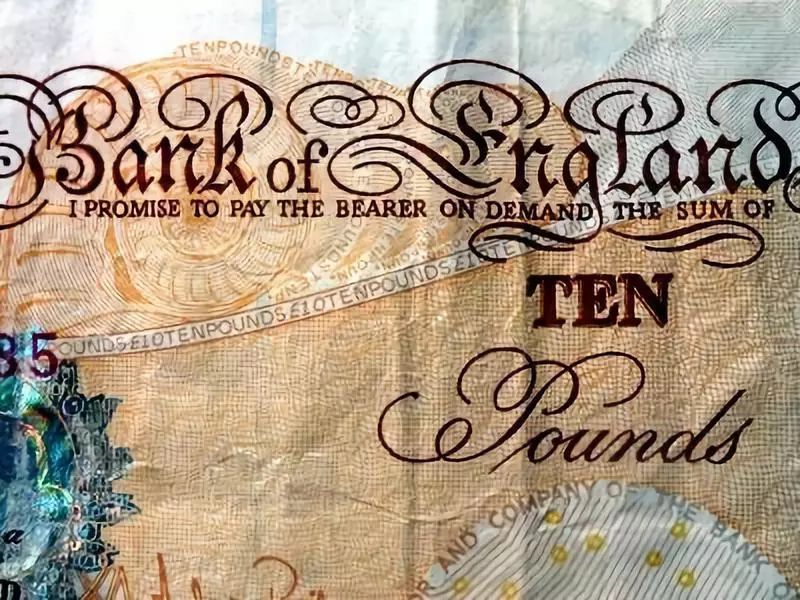
During the period of agricultural civilization, economic activity was limited by seasonal changes, the credit / debt cycle was also consistent with seasonal changes, and the currency circulated between production and consumption. In the period of industrial capitalism, prices and incomes were linked to their cost values, and investments were made to expand reproduction. In the period of financial capitalism, people have always pushed up asset prices by gambling. As the biggest eater, banks either buy bad assets or obtain capital gains through debt leverage speculation. Expansion of fiat money-based debt interrupted the flow of production and consumption, leading to economic contraction.
Banks make money from the difference between the interest rate on deposits and the interest rate on loans, which is called the spread. In addition, banks have magnified the impact of booms and busts in the business cycle by expanding credit and issuing more “money” in the financial system during periods of economic prosperity, and contracting credit and currency during economic downturns.
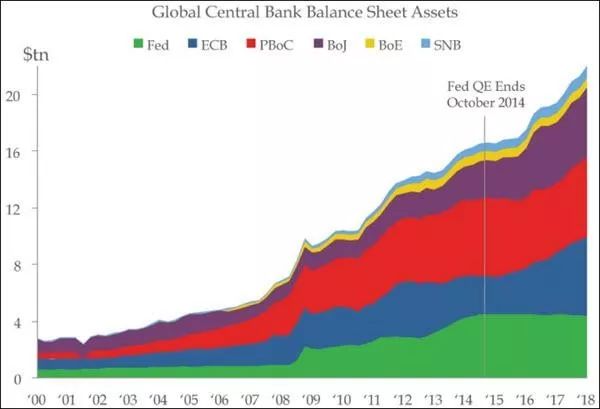
Over the past few years, central banks around the world have “expanded their assets and liabilities”, leading to large-scale price inflation in the stock market, bonds, and real estate.
Take the United States as an example. American households have mortgage debt of about $ 8 trillion, car loans of more than $ 1 trillion, student loans of more than $ 1 trillion, and credit card debt of nearly $ 1 trillion. US corporate debt totals $ 25 trillion, of which about $ 15 trillion is in the financial industry and $ 10 trillion is in non-financial companies. "Growth" of GDP is a euphemism for debt. Take the "great decoupling" of the United States as an example. With the growth of GDP, the global debt scale exceeds the repayment scale. For households, GDP growth has not kept pace with household income, and personal wages have stagnated.
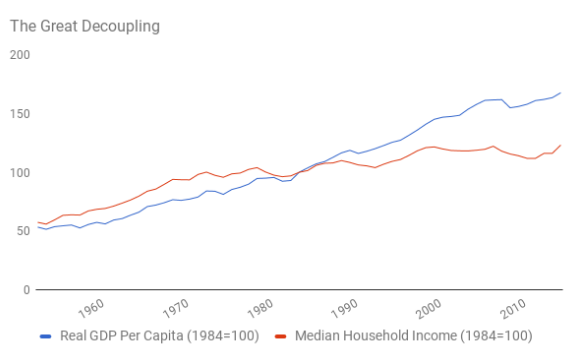
Around 1986, the traditional correlation between US income and GDP growth was broken, which was known as the "great decoupling." Source: World After Capital.
Former U.S. economic consultant and independent economist Michael Hudson states, "Most of the debt in today's economies is used to buy real estate (commercial and private) and financial securities. In the industrial sector, most corporate debt is through Leveraged from smaller or damaged competitors. "
Similar currency / credit base expansions have occurred around the world. Globally, there are 250 trillion U.S. dollars of outstanding debt and four times that of unreserved debt, not to mention a large number of chaotic financial derivatives. Its size is the sum of outstanding debt and unreserved debt. Roughly the same.
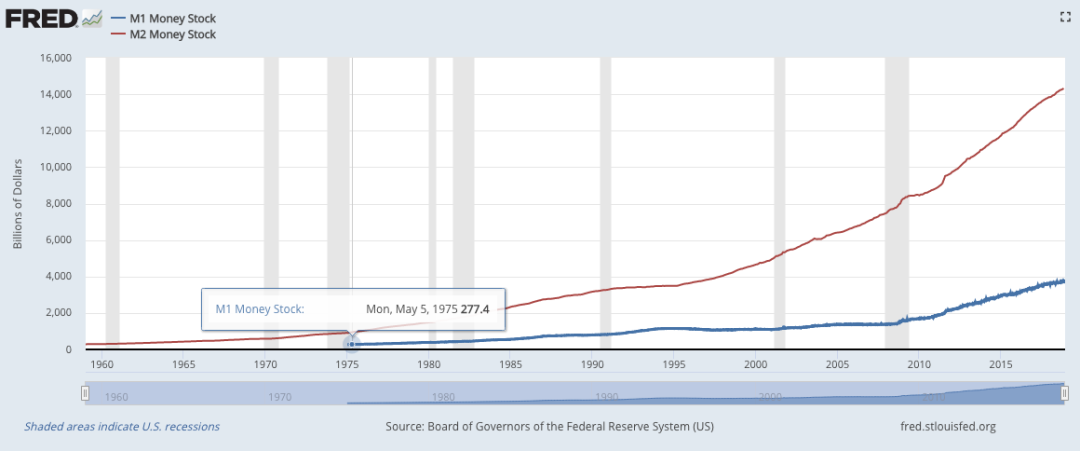
M1 is the most liquid part of the money supply, including physical currency, demand deposits, traveller's checks, and money supply. M2 includes all elements of M1 as well as "quasi currency" such as savings deposits, money market securities, mutual funds, etc.
In addition to debt, the downward trend in long-term interest rates since the early 1980s also signals that credit-driven economic growth is beginning to replace real growth. During the Global Financial Crisis in 2012 and 2016, interest rates fell to historical lows: just over 1% (many banks have lower rates themselves).

For decades, the interest rate on the ten-year T-Bill, which has the biggest impact on short-term interest rates for banks, has been in a long-term downward trend.
In this process, capitalism faces two main problems:
- The first is the debt cycle, which manifests itself as an economic crisis . As with any cycle, the credit / debt cycle will accelerate as each loan is completed. And every time a debt cycle is completed, the ability of the central bank to stimulate economic growth through monetary policy will diminish.
- The second is that, for centuries, the dual role of money as a store of value and a medium of exchange has been conflicted , because the working class used money to buy means of living, and the bourgeoisie lent money to workers to obtain economic rent. This conflict has led to distortions in government policy that are concentrated in interest rates. The working class wants interest rates to remain low to pay their debts, while the bourgeoisie wants interest rates to remain high to get the best returns from their idle capital.
This dual role also makes currencies of various countries playthings of huge speculation (these speculations have economic and humanitarian consequences every year). The daily turnover in the foreign exchange market exceeds 1.3 trillion US dollars, which dwarfs the total market value of global stock markets, and 96% of them are purely speculative. This has led to the infamous "Soros" -style attack on weak currencies, leading to recent credit crises in developing economies from Argentina to Mexico.
So, can blockchain save capitalism?
Functions of the blockchain
- Replace bank
Digital currency brings people a historic opportunity: decoupling the dual mission of currency as a means of value storage and an exchange medium, and diluting (if not impossible) the importance of fiat currencies in each country, and then using physical assets and common nature Resources (minerals, metals, air, land) are backing up, creating millions of more tangible local and regional currencies.
Bank profits are the source of everyone's pursuit of a definition of currency for all uses. The main goal of many different types of cryptocurrencies to replace banks is to "replace banks" with an alternative currency to replace the debt building that our economy has built in the era of credit and fiat currencies.
This kind of similar currency trying to replace banks has been tried before, but has never had the power of blockchain.
- Decentralized economy
With digital currency, the development of the sharing economy can be accelerated, and borrowers and lenders' dependence on banks can be eliminated. Uber and Airbnb have pioneered the first phase of a decentralized economy. In the second phase, people can use hundreds of different types of cryptocurrencies to trade in their own way, earn income, and avoid income tax or interest.
- Devalued currency
Local currencies and currencies that depreciate over time sound crazy, in fact they have a long history. During the Great Depression, when US banks ran out of funds, local governments and jurisdictions issued their own alternative currencies, which were widely used in the United States and Europe in the form of tokens.
Depreciating currency stimulates the circulation and speed of currency, rather than hoarding currency, allowing people to consume without credit or debt. The most famous example of demurrage currency is Worgl, or Freigeld ("free currency" in German), whose value drops at a rate of 1% per month and is stamped each time it is used. The experiment was inspired by the concept of the "Freiwirtschaft" by economist Silvio Gesell, that is, no currency speculation.
During the Great Depression, devalued currencies became popular in the Austrian town of Worgl, known as the "The miracle of Worgl," because it pulled the town from the bottom of the economic valley, although This situation is unlikely to continue.
Keynes dream
The pursuit of creating a currency (decoupled from the store of value) as a medium of exchange has gone a long way, and economist John Maynard Keynes was one of the earliest advocates. He asserted that the dual role of money created conflicts of interest between the "rich" and "poor" and attributed it to inequality. He disapproves of the use of universal currency speculation and interest rate arbitrage, and advocates negative interest rates in some cases.
In the 1940s, Keynes proposed a supranational global reserve account unit called "Bancor", which was the predecessor of the IMF's special drawing rights. Although it is not a currency in concept, it will be used purely as a non-speculative unit for international trade settlement-individuals cannot hold or trade Bancor. The United States intended to adopt Bancor, but after World War II and the Bretton Woods meeting, the dollar became the de facto global reserve currency.
A contemporary version of the Keynes Bancor-style currency was also proposed. The Trade Reference Currency (TRC) Terra, designed by economist Bernard Lietaer in 2000, is a supra-sovereign supplementary currency designed to align with the current international monetary system Run in parallel, without the unpredictable geopolitics and currency speculation of various countries.
Can blockchain realize Keynes's dream?
Automation will exacerbate long-term deflation and pull interest rates back to negative values
For the first time in history, the Internet has created the possibility of zero-cost marginal production—that is, goods that can be produced without labor or overhead—that will have a huge deflationary effect on the future world.
Automation and technology are already replacing labor positions, which in turn will replace consumer demand. is it possible?
- Millennials
Another factor that cannot be ignored is the disregard of bank interest rates by millennials. Digital currencies will weaken the importance of bank interest rates among young depositors. A study showed that 67% of "young millennials" (between 18 and 24) have less than $ 1,000 in savings accounts, and 46% The deposit is $ 0. Older Millennials (aged 24-35) did not fare any better, with 41% of them having no deposits.
- Coffee coin-is microeconomic / autonomous currency feasible?
According to reports, CoffeeCoin connects professional coffee producers in Indonesia with end buyers, while also providing a coffee trading platform for the entire coffee chain from farm to cup. The value of money can be interpreted as trust in the origin of the goods in the system.

Unlike the traceability of food, it gives money to all natural resources and replaces intermediate service providers through the micro-economy. But does the world need so much money?
Need so much currency
Earlier this year, Japanese listed conglomerate Kintetsu, which operates a railway linking major cities and tourist destinations, issued its own pilot community currency. Kintetsu Group uses Kintetsu coins at more than 400 locations, including a department store chain, and the tallest building in Japan (Abeno Harukas Tower, Osaka), which is 300 meters high. The pilot results were very positive and the company will gradually adopt this digital currency. Do you need so much currency for the same question?
All of these have revealed the potential and possibilities of the blockchain. How will blockchain reshape our political, economic, social order and environmental structure? I believe this is a gradual process. The world is changing from an overloaded exponential growth to a stable growth, and the blockchain will play an important role in it. But the blockchain will definitely not pass the speculation of digital assets, the explosion of exchange traded funds and initial coin offerings (ICOs), the innovation of trading platforms, decentralized exchanges (DEX) or the latest algorithms Strategy to change the world. One possibility is that the blockchain is accelerating the capital market out of the "debt" era and has entered an era of slowing growth and declining consumption. Simmel mentioned in "Philosophy of Money": "Money is only a bridge to ultimate value, and one cannot live on a bridge of pure means." In the same way, humans can't eventually perch on the leverage of the debt economy, even though it can pry the earth.
In this process, I am most concerned about the digital native economy and digital sovereign currency generated by the blockchain. From the perspective of evolution, the attributes of money have continuously evolved due to the rise and fall of the economic system. For example, the rise of the gift economy has led to physical currencies; the rise of the commodity economy has led to metal currencies; the rise of the gold economy has led to metal and credit currencies; The rise of the sharing economy has generated super-sovereign currencies. Today and in the future of human digital habitation, there will be a lot of imagination in the digital native economy and digital sovereign currency.
We will continue to update Blocking; if you have any questions or suggestions, please contact us!
Was this article helpful?
93 out of 132 found this helpful
Related articles
- In-depth analysis: about the new Filecoin mining solution, you need to know these
- Ant S9 reached shutdown price. Earned 90 yuan a day, now it is 6 yuan.
- Despite the plummeting price, most Bitcoin investors lost less than $ 200
- What kind of organization is the "super ledger" scrambled by the tech giants?
- MIT Technology Review: Can Photonic Chips "Save" Bitcoin?
- Digitizing private placement records, HSBC plans to transfer large-scale assets to blockchain custody platform
- Babbitt original | Blockchain will detonate interdisciplinary research, Bitcoin is only the first "nuclear bomb"





